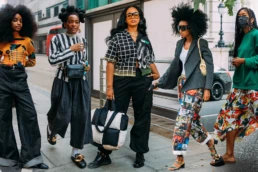There was a time when fashion was about appearance — the surface, the silhouette, the shimmer. But by 2026, it’s no longer enough for clothes to look good, they’re expected to do good — for our bodies, for our health, and for the planet. The modern wardrobe has quietly evolved into an ecosystem of intelligence, where fibers hum with data and fabrics think, breathe, and adapt. The line between fashion and technology has finally blurred — and the result is a revolution that feels both personal and profound.
It began subtly. Fitness trackers and smartwatches made us curious about what technology could tell us about ourselves. Then, fashion stepped in — softly, stylishly, and with purpose. Suddenly, clothing wasn’t just something you wore, it was something that wore you back, responding to your movement, emotion, temperature, and rhythm. From Levi’s Jacquard Jacket by Google, which lets you swipe your sleeve to answer calls or navigate maps, to Under Armour’s Rush Collection, designed to recycle body energy through infrared minerals — garments now function as quiet partners in daily life.
The emotional shift is striking. Where once consumers sought style for identity, now they seek it for interaction. Fashion in 2026 isn’t just expressive, it’s responsive. In cities like Seoul, London, and San Francisco, people wear Samsung Smart Shirts that monitor breathing and air quality. Commuters glide through cold mornings in Ministry of Supply’s intelligent blazers, whose temperature-reactive fibers keep them balanced between subway chill and office warmth. Even eveningwear is evolving — Emel + Aris heated coats now combine invisible heating panels with tailored silhouettes that feel more couture than gadget.
The appeal isn’t about novelty anymore — it’s about connection. These new garments blur the border between care and clothing. They make us feel safer, healthier, and seen. Imagine running in Hexoskin’s Smart Shirt, watching real-time heart-rate data stream to your phone, or cycling through city traffic wearing Lumen Couture’s LED safety jacket, signaling turns through light. These are not fashion fantasies — they’re today’s reality, accessible and increasingly mainstream.
Behind this quiet transformation lies something deeply human. In an age of isolation and digital fatigue, smart wearables give technology a softer face — one that touches skin, not screens. They invite comfort rather than distraction, merging the emotional warmth of clothing with the cognitive intelligence of machines.
The story of smart fashion isn’t about gadgets stitched into sleeves — it’s about empathy woven into fabric. As the decade unfolds, our clothes are no longer just telling the world who we are, they’re learning who we are — heartbeat by heartbeat.
The Evolution of Smart Textiles – From Gimmick to Daily Essential

It’s easy to forget how skeptical the world once was about wearable tech. The early 2010s were filled with awkward experiments — jackets that barely connected to phones, fitness bands that couldn’t hold a charge, and “smart” fabrics that felt more like science projects than clothing. Back then, the idea of embedding sensors into garments felt futuristic but frivolous. Yet, as technology matured and lifestyles changed, the gimmick quietly grew into something graceful. By 2026, smart textiles have evolved from prototypes into partners — seamlessly woven into daily life.
The transformation began where all revolutions do: with discomfort. People were tired of technology that demanded attention — endless notifications, blinking screens, and wrist-bound devices that buzzed with anxiety. The fashion industry saw an opportunity: what if tech could disappear into the things we already loved — soft fabrics, familiar silhouettes, and personal expression? What if it could listen instead of shout?
Enter the new generation of smart textiles — fabrics that sense, respond, and adapt without demanding visibility. Conductive threads, micro-sensors, and nanofiber networks are now as commonplace as zippers or buttons. In other words, intelligence has gone invisible.
Take the Levi’s Commuter Trucker Jacket with Jacquard by Google — one of the first examples of fashion meeting function with purpose. With a subtle touch on its cuff, cyclists can control music, take calls, or check directions — all without pulling out a phone. It marked a shift from gadgetry to grace. Then came OMsignal’s Smart Sports Bras and Compression Shirts, which embedded biometric sensors that track breathing, movement, and heart rate directly through fabric. They felt like normal clothing — but performed like lab-grade monitors.
The true test, however, was longevity. Early adopters wanted style, comfort, and washable designs — not another fragile gadget. Innovators like Nadi X answered that call. Their yoga pants, designed with integrated haptic feedback, guide users through poses using gentle vibrations at the hips and knees. It’s wearable mindfulness — a tactile teacher for body awareness.
By 2026, the smartest fabrics no longer scream innovation, they whisper it. The Under Armour Rush line now uses mineral-infused fibers that reflect body heat back into muscles, promoting recovery during workouts. Meanwhile, Samsung’s conductive textile sensors are being woven into everything from business shirts to athleisure, turning everyday apparel into health companions.
This evolution reflects a deeper shift in values. The novelty of “techwear” has faded, replaced by a quieter kind of luxury — functional intelligence. Consumers don’t want clothes that look like machines, they want machines that feel like clothes.
As fashion learns to speak the language of empathy, not engineering, smart textiles have finally found their rhythm. They no longer exist to impress — they exist to improve. And that, perhaps, is the most stylish innovation of all.
Health & Fitness Wearables – The Second Skin of 2026
In 2026, health isn’t just something you track — it’s something you wear. The gym bag has become smarter, and the mirror no longer tells the full story, your clothes do. The global wellness industry, now worth over $5 trillion, has redefined how people measure progress, and it’s not through numbers on a scale — it’s through data woven into the very fabric of what they wear.
Smart fitness wearables have evolved from wristbands into full-body companions. Today’s activewear doesn’t just absorb sweat — it absorbs information. Fabrics read muscle fatigue, predict dehydration, and even detect stress before your mind does. The concept of “listening to your body” has become literal, and the emotional connection between movement and technology has never felt more natural.
Under Armour Rush Collection (2026 Edition)
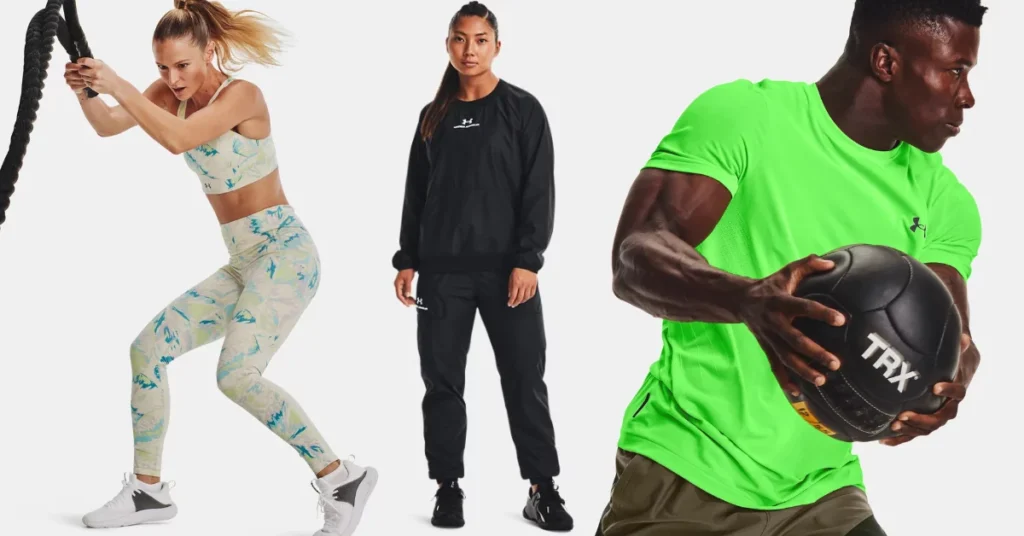
Under Armour was among the first to turn performance into a science of energy. Its 2026 Rush Collection integrates advanced mineral-infused fibers designed to absorb the body’s infrared heat and reflect it back, improving blood flow and endurance. What once sounded like pseudo-science is now backed by real physiological data, collected through UA Flow sensors embedded seamlessly in the fabric. Runners describe feeling subtly “recharged” mid-session, and athletes praise the responsive balance between compression and comfort. In a Reddit fitness thread, one user wrote: “It’s like your shirt knows when you’re slowing down — and refuses to let you quit.”
Hexoskin Smart Shirt (Canada)

From Montreal’s innovation labs comes Hexoskin, a pioneer that turned clothing into a medical-grade monitor. Used by NASA and professional sports teams, the 2026 model tracks heart rate, breathing, sleep, and activity through integrated textile sensors. The shirt connects directly to your phone or smartwatch, offering real-time insights without bulky hardware. Doctors now use Hexoskin garments for remote patient monitoring, proving that wellness and healthcare can share the same wardrobe.
Ambiotex Smart Compression Tee (Germany)
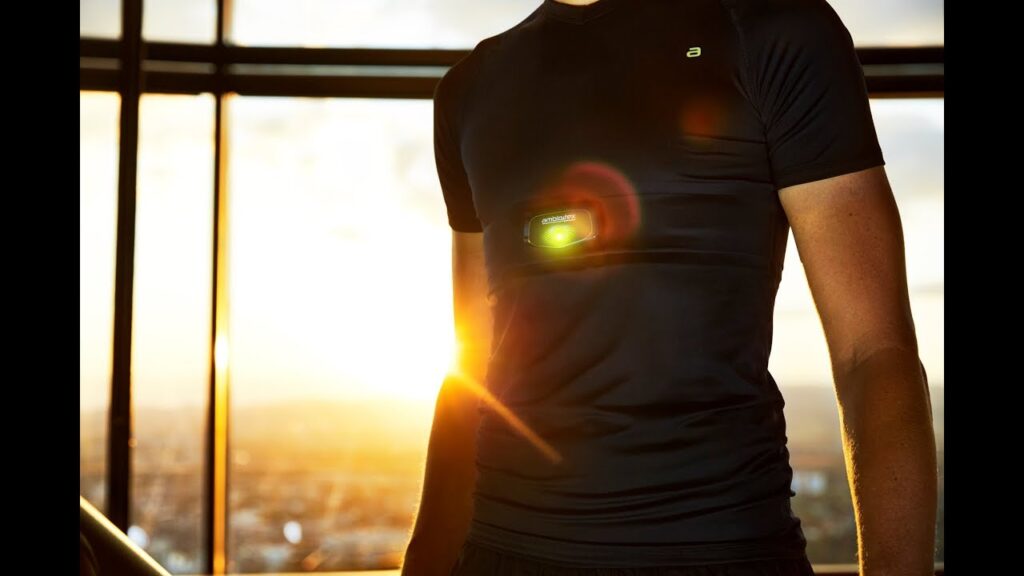
German precision meets athletic intelligence in the Ambiotex Smart Tee. This sleek, form-fitting shirt measures heart rate variability (HRV), an indicator of stress and recovery, helping users tailor their workouts — or their rest days. The data syncs with the Ambiotex app, visualizing when your body is in “fight or flight” versus recovery mode. For athletes, it’s a revelation, for overworked professionals, it’s a wellness wake-up call.
Nadi X Yoga Pants (Australia)

Mind-body harmony has found its tech soulmate in Nadi X Smart Yoga Pants. Created by Sydney-based Wearable X, these leggings feature woven haptic sensors that gently vibrate to guide your posture and alignment. For beginners, it’s like having a yoga instructor in every seam. The brand’s updated 2026 model now connects to Apple Health and provides real-time feedback for mindfulness sessions. What makes them magical isn’t the tech — it’s the emotion: subtle, caring, almost human.
Together, these garments form what designers now call “the second skin” — clothing that knows us, supports us, and sometimes protects us from ourselves. The brilliance of this technology lies not in its complexity but in its empathy. A shirt that warns of overexertion, leggings that improve posture, or a top that monitors recovery — these are not gimmicks, they are guardians of wellbeing.
And consumers love them for that reason. In focus groups, people say they feel seen by their clothes — a curious but beautiful sentiment. For years, fitness was about pushing harder, in 2026, it’s about understanding deeper. Smart fabrics have made that shift possible. The era of mindless movement is over. We’ve entered the age of meaningful motion — powered not by willpower alone, but by the quiet intelligence of what we wear.
Fashion Meets Function – The Rise of Everyday Smartwear
The smartest clothes in 2026 don’t look futuristic — they look familiar. That’s their genius. The days of clunky gadgets stitched into sleeves are over, today’s smartwear feels natural, elegant, and often invisible. It’s fashion that performs, protects, and personalizes — without sacrificing beauty. The best innovation, after all, is the kind that disappears into experience.
The post-2025 consumer doesn’t want to wear technology, they want technology that wears like them. Designers have listened — blending responsive fabrics, micro-sensors, and adaptive temperature controls into styles that move effortlessly from morning commute to evening social life.
Levi’s x Google Jacquard Jacket v3 (2026)

The collaboration that started the smartwear conversation years ago has reached its most seamless version yet. The Levi’s x Google Jacquard v3 looks like a classic denim jacket — timeless, slightly rugged — but now its cuff hides an upgraded touch interface that controls music, navigation, and calls with subtle gestures. The new Jacquard Tag connects directly to Google Assistant, and unlike early versions, it’s washable, flexible, and nearly weightless. Cyclists and commuters swear by it. As one user on a London tech forum put it: “It’s not a gadget anymore — it’s my morning ritual.”
Samsung Smart Shirt (Korea)

Samsung’s 2026 Smart Shirt has quietly redefined health-conscious businesswear. Designed for urban professionals, it monitors breathing patterns, posture, and even air quality through embedded micro-sensors and syncs with the Galaxy Health ecosystem. The fabric’s nano-layered cotton-poly blend feels indistinguishable from a luxury Oxford shirt, yet its precision rivals medical equipment. In South Korea, it’s become a status symbol of mindfulness — subtle, sophisticated, and silently protective.
Ministry of Supply “Intelligent Blazer” (USA)

Boston-based Ministry of Supply, known for merging engineering with elegance, introduced its Intelligent Blazer as the world’s first climate-reactive business jacket. Built with phase-change materials inspired by NASA technology, it adjusts to your body temperature in real time — keeping you cool under stress and warm in winter commutes. The jacket’s micro-filament weave also resists wrinkles and adapts to body motion, making it a favorite among frequent travelers. It’s not just smart clothing — it’s sanity-saving.
Emel + Aris Heated Coats (UK)

In London’s chilly streets, Emel + Aris has elevated smart outerwear into an art form. Their heated coats use invisible conductive panels powered by a slim rechargeable battery to provide consistent warmth without bulk. The 2026 collection features sleek wool-cashmere blends with tailored silhouettes — elegance first, circuitry second. Consumers describe the feeling as “comfort disguised as couture.” It’s the kind of innovation that never shouts, only comforts.
Xiaomi Mijia Smart Sneakers (China)
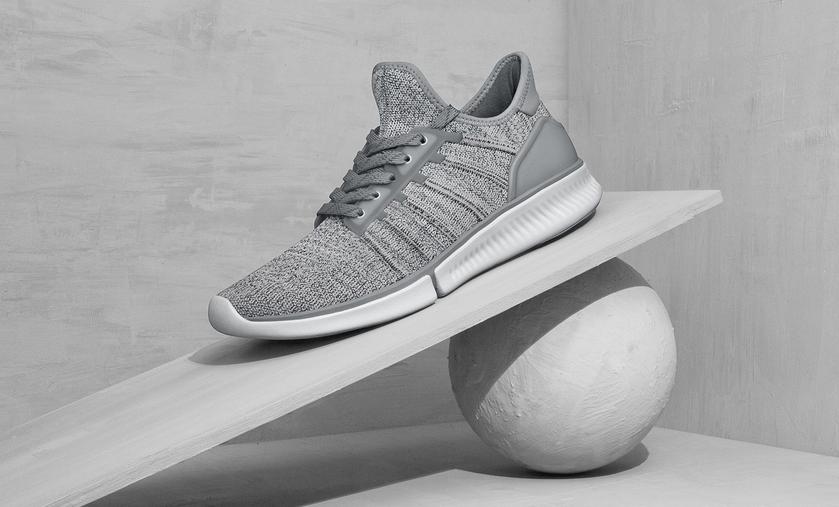
Asia’s contribution to everyday smartwear comes from Xiaomi, whose Mijia Smart Sneakers integrate Bluetooth sensors to measure pace, stride, and impact force. They sync with the Mi Fitness app and are designed for long-term durability. Priced under $80, they’ve democratized access to performance analytics once reserved for athletes.
These innovations mark a defining shift — technology no longer lives in the accessory layer, it’s moved into the fabric of daily life. Clothes are no longer passive surfaces but intelligent extensions of our routines.
And yet, what makes this revolution striking isn’t the circuitry — it’s the subtlety. Consumers describe feeling “looked after” rather than “tracked.” Smartwear has finally crossed the emotional threshold from mechanical to meaningful. The best designs don’t demand attention, they deliver reassurance.
In a world where everything is getting smarter, everyday fashion has found a way to stay human. And that’s what makes it beautiful.
Smart Fabrics for Safety & Wellbeing
Not all fashion aims to dazzle. Some exists to protect — quietly, persistently, and without applause. In 2026, smart fabrics have evolved beyond fitness and fashion into guardians of wellbeing, merging comfort with care. They track, alert, and even save lives. Where once wearable tech felt like luxury, it now feels like responsibility.
The new generation of safety wearables is redefining what clothing can mean to its wearer. It’s no longer about “looking smart” — it’s about being safe, being seen, and being supported. Whether monitoring elderly patients, cyclists, or athletes, these garments embody an invisible promise: we’re watching out for you.
Sensoria Smart Socks (Italy/US)

It started as a niche innovation and has become a global benchmark in wearable safety. Sensoria Smart Socks integrate textile pressure sensors that analyze gait, posture, and balance — alerting wearers to risk of injury or fall. Originally designed for runners, they’ve become essential for elderly users and physiotherapy patients. The latest 2026 model syncs to the Sensoria Walk app, sending real-time mobility data to caregivers or doctors. As one reviewer said, “It feels like my socks are listening to me — and caring back.”
Lumen Couture LED Safety Gear (US)
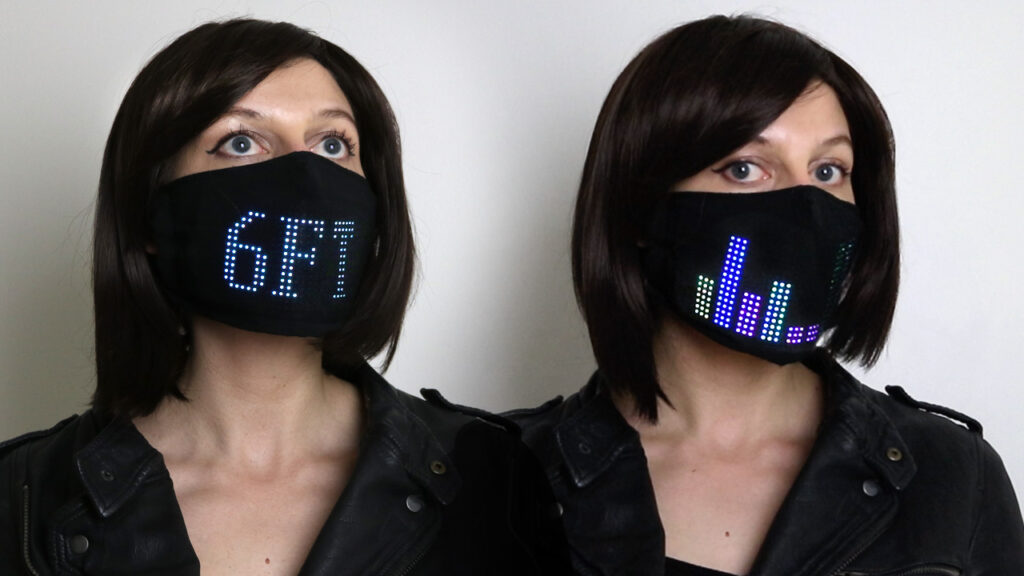
In cities that never sleep, visibility is survival. Seattle-based Lumen Couture has turned safety into style with its LED Smart Jackets and Cycling Vests. These garments use motion sensors to light up automatically in low visibility and even signal turns using hand gestures. The updated 2026 model is voice-responsive — you can tell your jacket to “light red” or “blink left” while cycling through traffic. Beyond the tech, it’s empowerment through illumination — clothing that makes people visible in every sense.
KYMIRA Infrared Recovery Wear (UK)

Blending sports science with wellbeing, KYMIRA uses patented infrared-emitting fibers that convert body heat into healing energy. The tech increases blood circulation, speeds recovery, and reduces muscle fatigue — a favorite among marathoners and chronic pain sufferers alike. The 2026 KYMIRA line also includes compression leggings and base layers for hospital recovery use. The feeling isn’t just physical, users describe it as “wearable therapy.”
Nanowear SimplECG Garments (US)
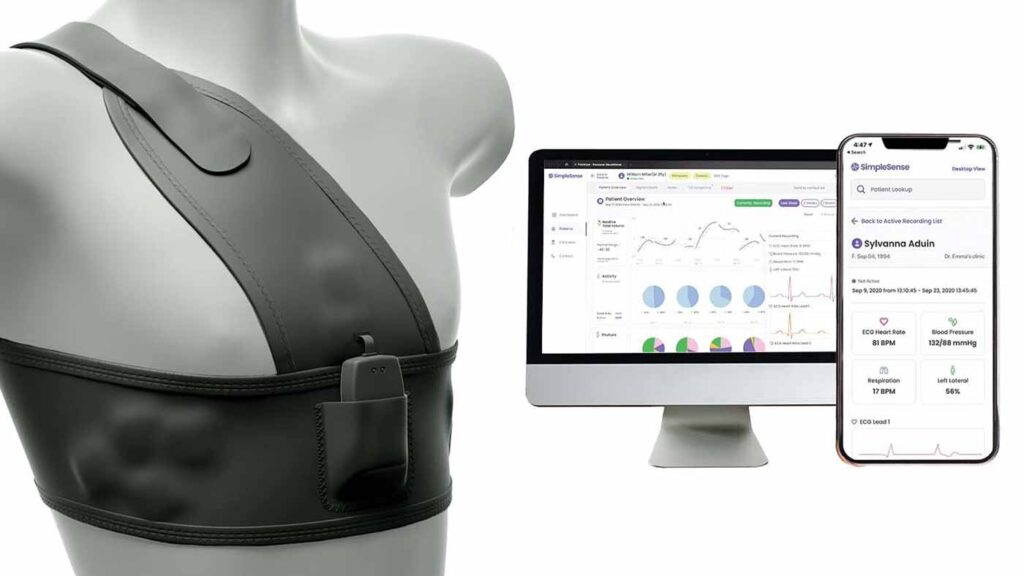
New York-based Nanowear is leading the medical-wearable frontier. Their SimplECG smart undershirts use microscopic conductive fibers to measure heart activity with clinical accuracy. The data syncs with a cloud-based platform where physicians can detect cardiac irregularities remotely. It’s healthcare woven into your morning routine — unobtrusive, continuous, and compassionate.
Smart fabrics like these are transforming wellness from an appointment into an atmosphere. The best ones blend into life until you almost forget they’re there — until, perhaps, the moment they protect you.
It’s easy to talk about innovation in numbers and patents, but what defines the 2026 era of smart fashion is empathy in design. These garments don’t just collect data — they translate it into comfort, trust, and peace of mind. In a world of constant noise, that’s the kind of safety we crave most.
Sustainability Meets Technology – The Eco-Smart Hybrid
If the last decade taught fashion how to look good, 2026 is teaching it how to behave well. The most exciting innovation in clothing today doesn’t just connect to your phone — it connects to your values. As climate urgency collides with technological progress, a new generation of eco-smart fabrics is redefining what it means to be sustainable. These garments don’t simply minimize harm, they actively respond to their environment, reduce waste, and, in some cases, even power themselves.
Pangaia Graphene Jacket (Global)

Few brands capture the 2026 spirit of eco-tech like Pangaia. Their Graphene Jacket uses a futuristic nanomaterial that regulates body temperature while storing solar energy through a thin photovoltaic layer. It can charge small devices and self-heat during cold weather — all while being fully recyclable. The graphene fibers also make it incredibly durable, one reviewer described it as “a jacket that feels like it’s thinking.” For urban commuters and adventure travelers, it’s sustainability made tangible.
Spiber’s Brewed Protein™ Fabric (Japan)

In Japan, biotechnology has become fashion’s quiet revolution. Spiber, a material science company from Tsuruoka, has perfected its Brewed Protein™ fibers — lab-grown silk alternatives made through microbial fermentation. They mimic the softness and strength of spider silk, without harming animals or relying on petroleum. In 2026, collaborations with The North Face and Goldwin brought these fabrics into mainstream outerwear. The result: high-performance garments that feel organic, not synthetic.
Myant SKIIN Smart Underwear (Canada)

Sustainability meets intimacy with Myant’s SKIIN Smart Underwear, which monitors hydration, temperature, and sleep patterns through biodegradable conductive yarns. The latest line is made from organic cotton blended with seaweed fiber — naturally antibacterial and compostable. More than a wellness product, it’s an exploration of how clothing closest to the skin can nurture both body and planet.
Vollebak Solar Charged Jacket (UK)

Vollebak, the British label known for merging adventure and technology, continues to lead with its Solar Charged Jacket. The fabric absorbs sunlight during the day and glows vividly in the dark — a self-powered safety feature for hikers, cyclists, and night runners. What makes it remarkable is its closed-loop production: every element, from dye to thread, is designed for reuse. Vollebak’s mantra, “Built for Earth and Beyond,” captures the audacity of sustainability that thinks big.
These designs represent a convergence that once seemed impossible — the meeting of circuitry and conscience. Each thread, battery, and fiber carries intention.
What unites these innovations isn’t just ecological efficiency, but emotional resonance. They remind wearers that sustainability doesn’t have to mean sacrifice — it can feel powerful, futuristic, and alive. The eco-smart hybrid is fashion’s way of proving that the planet’s future can be both high-tech and deeply human.
Luxury Joins the Smart Revolution
For years, luxury fashion treated technology with suspicion — as if utility might dilute mystique. But in 2026, that wall has finally fallen. Today, the world’s most prestigious houses are proving that couture and circuitry can coexist — not as opposites, but as extensions of one another. The smart revolution has entered the salons of Paris, Milan, and Seoul, turning luxury into something dynamic, data-driven, and deeply personal.
What changed wasn’t just innovation, it was attitude. Consumers of luxury are no longer satisfied with owning symbols — they want experiences. They expect their clothing to listen, respond, and adapt as effortlessly as their smartphones. For heritage brands, the answer has been to fuse craftsmanship with computation — the precision of artisans meeting the intelligence of algorithms.
Louis Vuitton Horizon Light Up Smartwatch (2026 Edition)
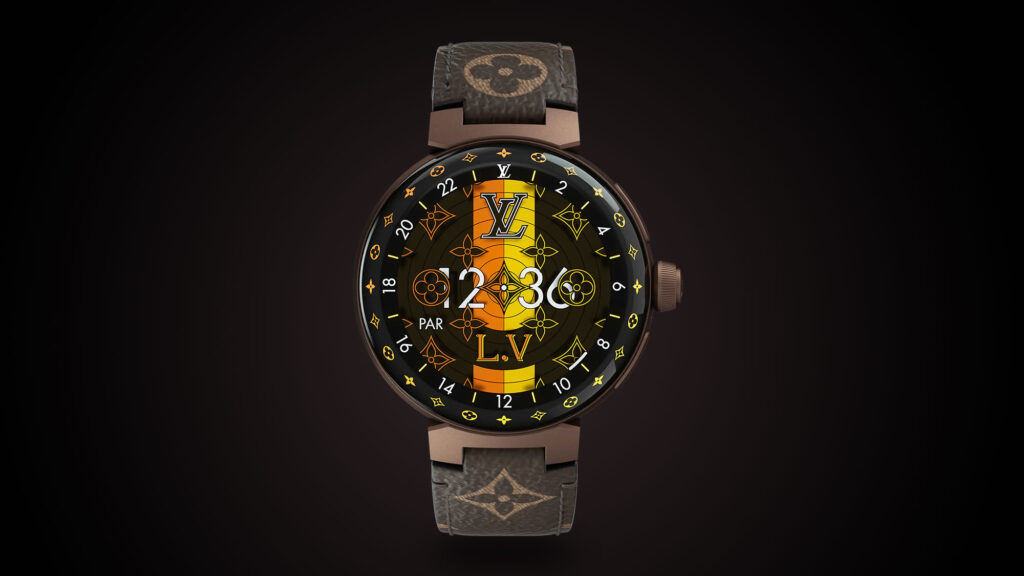
Luxury tech meets haute horlogerie in the Louis Vuitton Horizon Light Up smartwatch, reimagined for 2026. The timepiece features a sapphire crystal touch display encircled by a luminous monogram ring that responds to motion and mood. Beyond tracking fitness or messages, it integrates with LV’s new Digital Wardrobe, syncing your outfit data with the Maison’s styling app to recommend accessories or color palettes in real time. It’s not just wearable luxury — it’s curated identity.
Balenciaga x Meta “Reality Layer” Garments (Global)
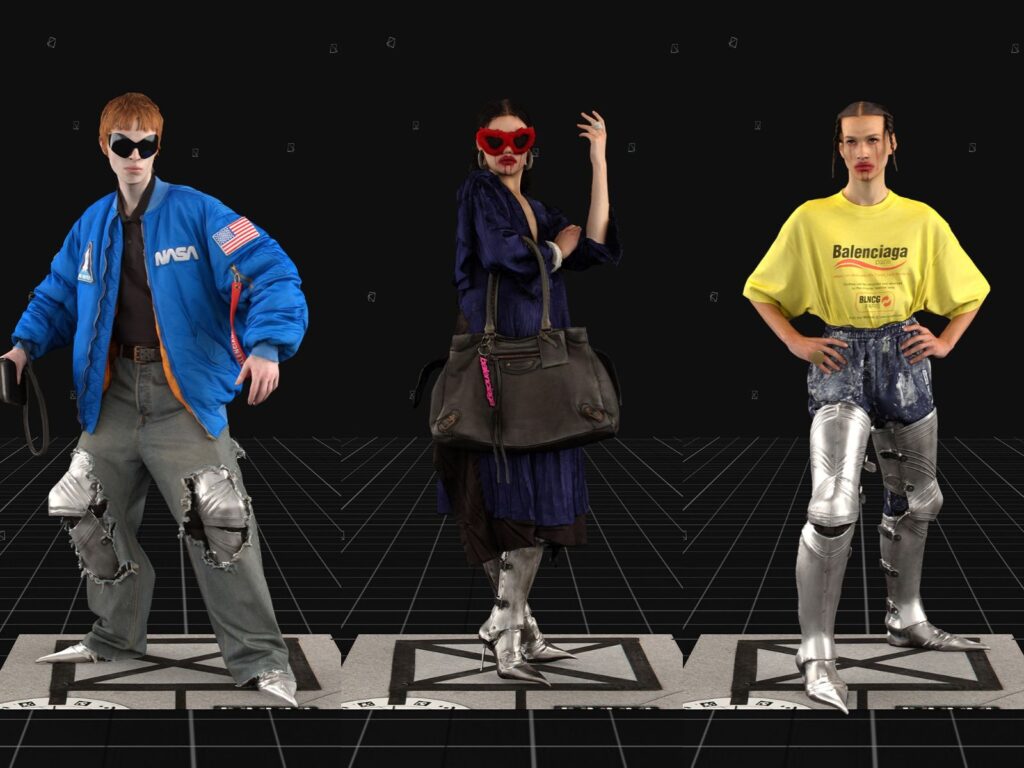
Balenciaga’s partnership with Meta has turned digital couture into wearable duality. Their Reality Layer Collection fuses NFC chips into physical garments, allowing them to unlock augmented-reality versions in the metaverse. Each coat or hoodie doubles as an AR skin, linking the physical and digital selves. The 2026 drop, featuring holographic trench coats and reactive sneakers, sold out within hours — not because of hype, but because it bridged two realities with one design language.
Ralph Lauren PoloTech Shirt (2026 Reboot)

Ralph Lauren’s classic PoloTech Shirt has returned in a new avatar — softer, smarter, and infinitely more stylish. Made from advanced silver-thread sensors woven directly into cotton, it tracks heart rate, breathing depth, and posture while maintaining that timeless preppy aesthetic. The 2026 reboot integrates with Apple Health and Ralph Lauren’s PoloConnect app, giving tailored wellness insights. Imagine Ivy League elegance that quietly monitors your stress during boardroom meetings.
Gucci Smart Sneakers (Italy)
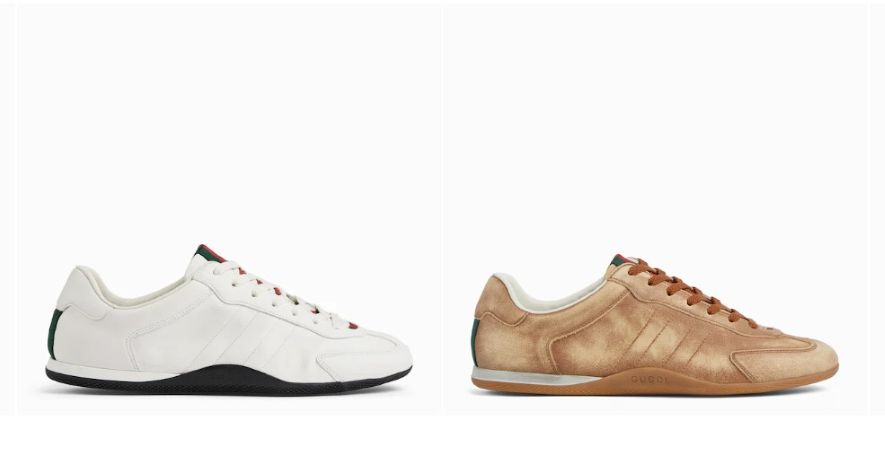
Gucci’s 2026 Smart Sneakers merge streetwear luxury with digital verification. Each pair includes an NFC chip linked to a blockchain certificate, verifying authenticity while connecting the physical item to its NFT twin. Some models also feature adaptive cushioning that reacts to walking patterns — merging style, comfort, and technology into one iconic step. Gucci calls it “fashion that learns your rhythm.”
The luxury sector’s embrace of smart fashion has redefined what prestige means. No longer limited to rarity or exclusivity, luxury in 2026 is about responsiveness. A handbag that lights up as you approach your phone. A jacket that memorizes your preferred climate. A watch that understands your aesthetic mood.
Technology hasn’t made luxury less magical — it’s made it alive. In a world obsessed with newness, these brands have done something braver: they’ve made innovation feel timeless.
Emotional Design – When Clothing Understands You
There’s a quiet revolution happening beneath the fabric — one not powered by processors, but by empathy. As fashion and technology intertwine, 2026 has ushered in a new concept: emotional design. These are garments that sense not only how we move, but how we feel. They read our stress, translate our heartbeat, and respond with warmth, light, or color — subtle gestures that say, “I see you.”
The emotional layer of smart fashion isn’t about metrics, it’s about mood. For decades, technology demanded that humans adapt to it. Now, design philosophy has flipped — technology is adapting to us. Clothes that can mirror emotions or soothe anxiety are no longer sci-fi, they’re therapy stitched into cotton and silk.
EmotiBit Patch (US)
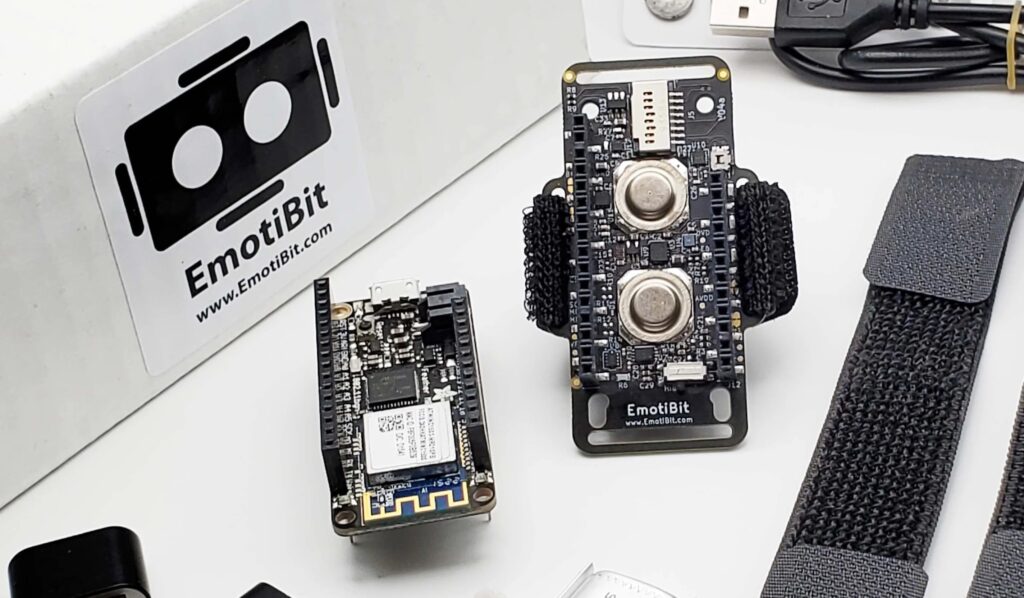
The EmotiBit started as a university research project and is now a discreet fashion-layer sensor worn under or within clothing. It captures biometric signals — temperature, heart rate, perspiration — to infer emotional states like calm, stress, or excitement. Integrated into smart shirts or jackets, the 2026 version syncs with mood-tracking apps to recommend actions like breathing exercises or hydration reminders. More than data, it offers dialogue — a conversation between body and mind.
CuteCircuit Sound Shirt (UK)
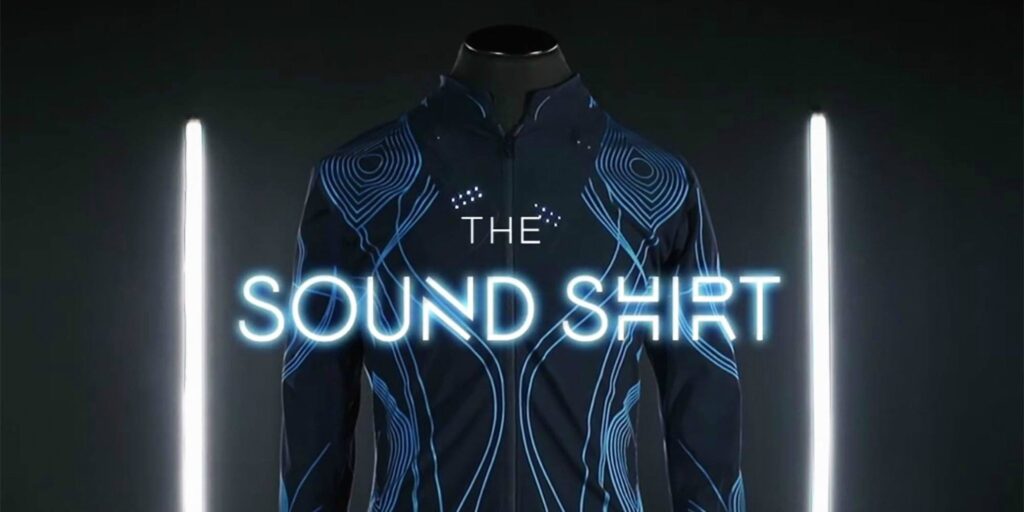
Created for the hearing-impaired, CuteCircuit’s Sound Shirt is one of the most moving examples of emotional design. Using 16 haptic actuators woven into the fabric, it translates musical frequencies into gentle vibrations across the torso and arms, allowing wearers to feel music. In 2026, the Sound Shirt has expanded beyond accessibility to luxury experiences — orchestras now perform concerts where audience members wear the garment to “experience symphony through touch.” It’s art meeting empathy in its purest form.
Wearable X “MoodFit” Line (Australia)

The MoodFit collection by Wearable X — known for its Nadi X yoga pants — takes emotional clothing a step further. Using integrated temperature sensors and color-shifting fibers, the garments subtly change hue based on body temperature and stress levels. The result is clothing that externalizes inner emotion — calming blues in relaxation, warm amber during intensity. For many, it’s become a meditative tool: fashion that responds, reflects, and restores balance.
OMSignal’s Emotional BioWear (Canada)

Canadian innovators OMSignal have introduced BioWear, a line of adaptive smartwear designed for mental wellness. These garments analyze breathing rhythm and heart coherence, offering haptic cues when anxiety rises. Imagine a shirt that softly vibrates to remind you to slow down — a private, wearable therapist for the overstimulated world.
This shift toward emotional intelligence in fashion reveals something profound: technology’s final evolution isn’t dominance — it’s empathy. Consumers are no longer impressed by what tech can do, but by how it understands.
Emotional design turns fashion into a feedback loop of care. It blurs the boundary between self-expression and self-connection — clothes that don’t just change appearance, but mood. In 2026, the most beautiful garments don’t make us look different, they make us feel seen.
The Future Wardrobe – Adaptive, Circular, and Personal
In 2026, the wardrobe has evolved from a closet of clothes into a living system — responsive, predictive, and deeply personal. Fashion has always been about self-expression, but the next generation of smartwear adds something new: self-understanding. The garments of the near future don’t just fit your body, they fit your life — adapting to your mood, your environment, and your ethics.
At the heart of this transformation lies AI-driven personalization. Your wardrobe now communicates with your lifestyle — learning your patterns, suggesting combinations, even recommending when to repair, wash, or resell. Companies like Eon and Circular. Fashion are pioneering Digital IDs, small data chips embedded in clothing that track its origin, material, and journey. In partnership with Stella McCartney, these IDs link garments to an app where users can see care instructions, carbon footprint, and resale value. The result? Clothing that’s not disposable, but traceable — an ecosystem where every item has a story and a future.
The next leap is adaptive fashion — AI-integrated wardrobes that anticipate needs before you articulate them. Imagine waking up on a humid day and your shirt automatically adjusting its breathability, or your office jacket suggesting a lighter lining via an app. Microsoft’s FabricLink prototype is already testing AI-assisted material mapping that adapts heat, moisture, and stretch in real time. It’s clothing as a living organism — one that evolves with its wearer.
Circularity is now embedded in the tech. Smart fabrics are being designed for second and third lives, using fiber-identification systems to simplify recycling. Your future wardrobe might notify you when a garment’s life cycle is complete and guide you toward trade-in or upcycling options — a digital concierge for sustainability.
Subscription-based fashion models are also rising. Instead of purchasing, users lease smart garments that update firmware or adapt features remotely — extending lifespan instead of replacing it.
This new paradigm changes the emotional dynamic between humans and their clothes. Wardrobes are no longer static archives of trends, they’re dialogues — fluid, intelligent, and enduring. The future of fashion is not about owning more, but about owning better. It’s not about fast or slow — it’s about alive.
Reflection – The Era of Aware Apparel
Fashion has always been a mirror — it reflected our desires, our dreams, our vanity. But in 2026, it has become something gentler and more profound: a companion. The rise of smart fabrics and wearables isn’t about turning humans into data streams, it’s about reminding technology of its most human purpose — to care.
We live in a time when our clothes can sense fatigue, detect emotion, and even comfort us when words can’t. A jacket that warms your spine on a cold night, a yoga pant that guides your breathing, a bracelet that reminds you to rest — these are no longer novelties, but extensions of empathy. In many ways, smart fashion has restored something we lost in the digital rush: connection without intrusion.
The era of aware apparel is less about circuitry and more about sensitivity. It’s about listening fabrics — textiles that respond, heal, and learn. It’s about quiet intelligence, the kind that sits close to the skin and asks for nothing in return. When we think of innovation today, we no longer imagine metal and glass, we imagine softness that thinks.
But perhaps the most beautiful transformation is emotional. Our clothes are learning to meet us halfway — to bridge technology with tenderness. Each touch, vibration, or adaptive shift is a new form of dialogue. And while algorithms hum invisibly beneath our sleeves, what truly moves us is the feeling that we’re understood.
This is the paradox of progress: as our garments grow smarter, fashion itself grows more human. The future doesn’t feel like sci-fi anymore — it feels like care, stitched into fabric.
So as we step into the rest of the decade, one truth stands out: fashion no longer ends when we get dressed. It continues — learning, protecting, and evolving with us. We are entering a world where clothes don’t just fit our bodies, they fit our lives.
And maybe that’s what true luxury has always been — not excess, but awareness.


